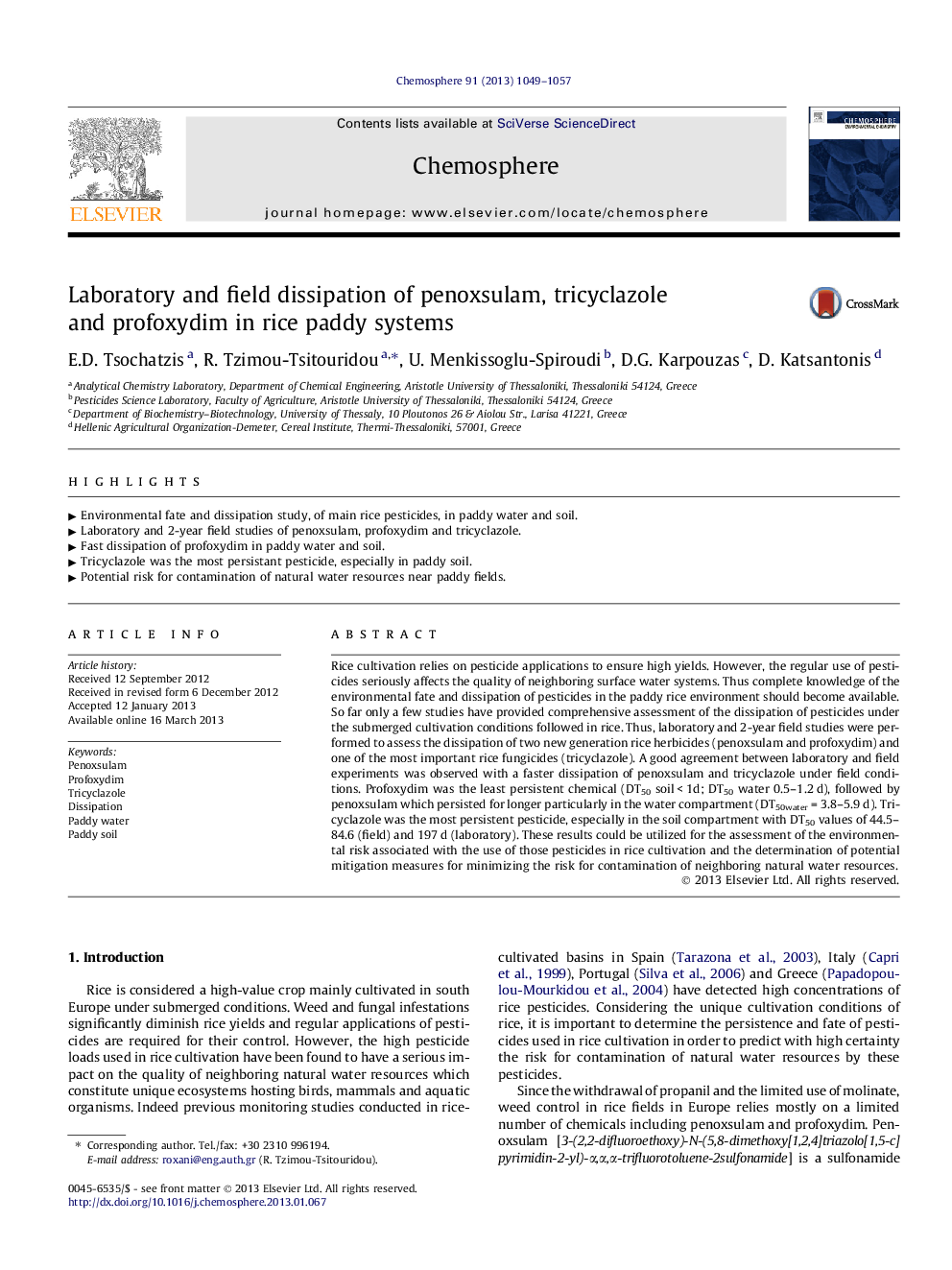| Article ID | Journal | Published Year | Pages | File Type |
|---|---|---|---|---|
| 4409363 | Chemosphere | 2013 | 9 Pages |
Rice cultivation relies on pesticide applications to ensure high yields. However, the regular use of pesticides seriously affects the quality of neighboring surface water systems. Thus complete knowledge of the environmental fate and dissipation of pesticides in the paddy rice environment should become available. So far only a few studies have provided comprehensive assessment of the dissipation of pesticides under the submerged cultivation conditions followed in rice. Thus, laboratory and 2-year field studies were performed to assess the dissipation of two new generation rice herbicides (penoxsulam and profoxydim) and one of the most important rice fungicides (tricyclazole). A good agreement between laboratory and field experiments was observed with a faster dissipation of penoxsulam and tricyclazole under field conditions. Profoxydim was the least persistent chemical (DT50 soil < 1d; DT50 water 0.5–1.2 d), followed by penoxsulam which persisted for longer particularly in the water compartment (DT50water = 3.8–5.9 d). Tricyclazole was the most persistent pesticide, especially in the soil compartment with DT50 values of 44.5–84.6 (field) and 197 d (laboratory). These results could be utilized for the assessment of the environmental risk associated with the use of those pesticides in rice cultivation and the determination of potential mitigation measures for minimizing the risk for contamination of neighboring natural water resources.
► Environmental fate and dissipation study, of main rice pesticides, in paddy water and soil. ► Laboratory and 2-year field studies of penoxsulam, profoxydim and tricyclazole. ► Fast dissipation of profoxydim in paddy water and soil. ► Tricyclazole was the most persistant pesticide, especially in paddy soil. ► Potential risk for contamination of natural water resources near paddy fields.
